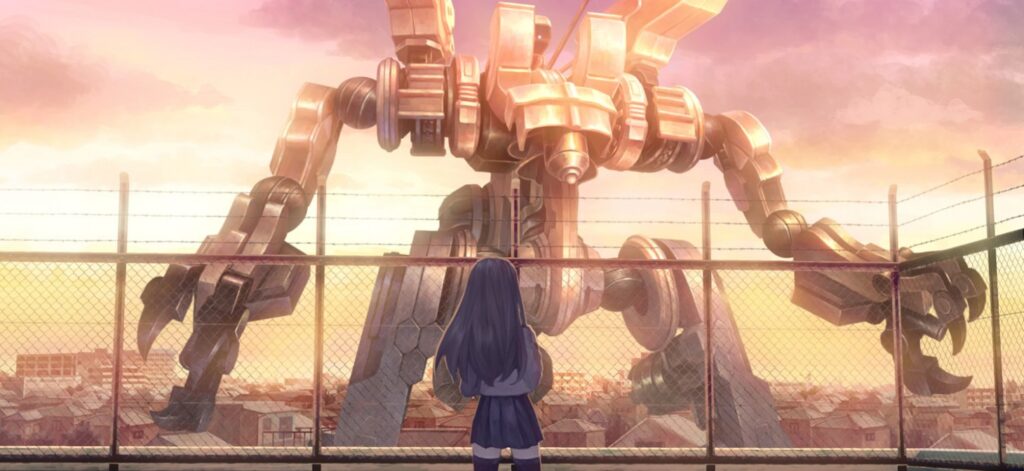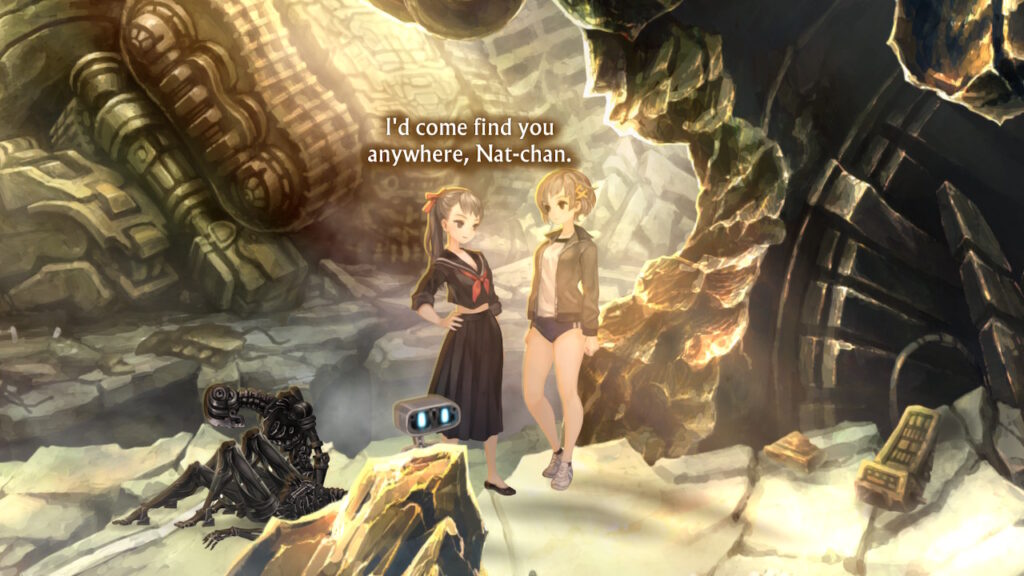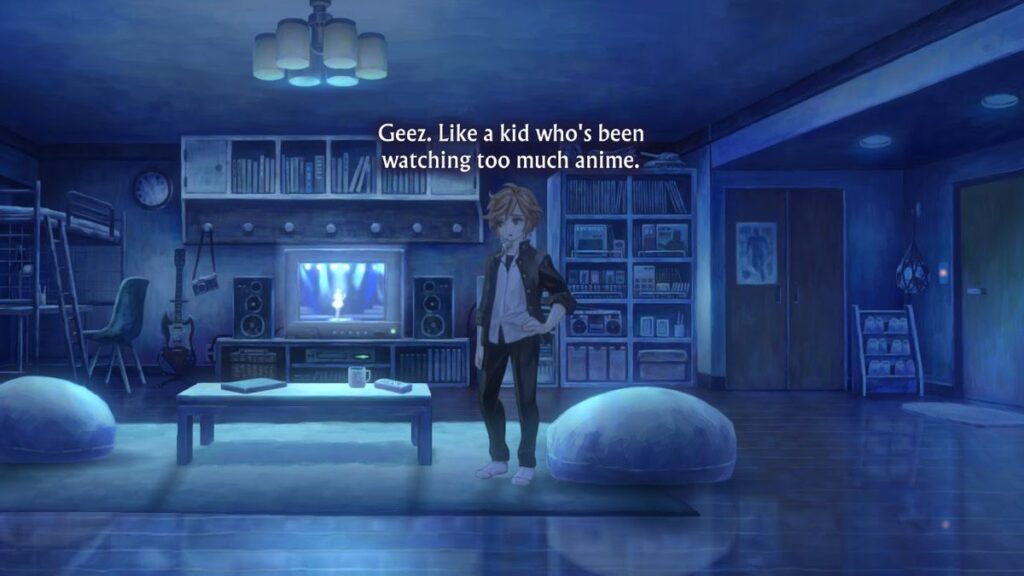13 Sentinels: Aegis Rim is a time-jumping, narrative-focused game that borrows inspiration from every sci-fi trope in the book. It’s part The Matrix, Terminator, Godzilla, and Groundhog Day. There are aliens to meet, androids to shoot, and a larger mystery to uncover. In a traditional medium like film or even anime, the story wouldn’t work. Only through the lens of gaming can a story like 13 Sentinels truly shine.
13 Sentinels is played primarily in two parts. There is a tactical RPG-type gameplay that has you controlling the sentinels as they battle Kaiju in a war-torn Japan. The main crux of the game, though, is the remembrance mode, a visual novel-type game that progresses through 13 different playable characters.
High Brow Sci-fi

Each story in remembrance hinges on a specific sci-fi trope. There is the girl who lost her memory, the boy stuck in a time loop, and the young girl who finds a lost alien looking to go home. While some stories are better than others, the culmination of each sets 13 Sentinels apart as something special. Each story you play gradually reveals more about the greater mystery at hand. What begins as a story of 13 teenagers attempting to save the world turns into a story about 13 kids trying to revive the world.
I spent most of my time with 13 Sentinels, pulling on threads to find the greater mystery. But what I found at the end of the game was that the journey was much more enjoyable than the destination.
13 Sentinels, 13 Stories

It’s hard not to fall in love with some of these characters while you play through 13 Sentinels. Take, for example, Natsuno Minami, a young girl who finds a small robot named BJ and immediately abandons all of her after-school activities to get him home. Her story is pulled straight from E.T. and the developers at Atlus put as much care into her story as Steven Spielberg put into his.
The game locks off her progress as soon as you make some real headway in Natsuno’s story. It forces you to play one of the other characters to advance the narrative. It’s effective, if not at times frustrating, mechanic. All I want is to know what happens to BJ and Natsuno. But now I’m forced to spend time with all the other students before seeing BJ and Natsuno’s finale.
Time-Travel And The Illusion Of Linearity

The sense of urgency that exists in most games is almost all but abandoned in 13 Sentinels. That’s because the game plays with time in such a novel way that there is never a thread that I feel needs to be completed first. Even though I want to see a specific character’s story, I don’t feel I have to.
The game takes in 1985, 1945, 2025, 2065, and 2105. Jumping around to all these periods through the lens of different characters means the story I’m picking in 1985 doesn’t feel urgent.
The game portrays this feeling best in Nenji Ogata’s story. Ogata is stuck searching for a key on a train that continually loops. If Ogata fails to find the key, he is immediately transported back to the train station and forced to start his search anew. Ogata’s story mimics the entire game of 13 Sentinels. When all the current objectives are cleared, the game starts again. This takes us back to the character selection scene and asks us to choose again.
Different Results, Same Outcome

As the stories in remembrance close, they get progressively more obtuse. Each story inevitably overlaps with the others, but none neatly tie up. In Natsuno’s story, she finally learns the truth about BJ. But it gives little comfort to the player, and we still don’t really know why he is there. In Ogata’s story, he finally defeats the looping train, but we still don’t know who sent him to search for this mysterious key.
By the time every story has concluded, we learn a lot about the characters of this world. They are all teenagers fighting for something bigger than themselves in an attempt to save their world. But unfortunately, it was all for naught. The era of 1945, 1985, 2025, and 2065 are all gone. The 13 Sentinel pilots have been living in a simulation. Remembering the pasts they left behind to start a new world.
Remembrance

Learning this, the game mode remembrance makes a lot more sense. These characters aren’t fighting to save a world but to remember one that has gone. Through remembrance, the characters are given the context to start the world anew. Every story we play attempts to provide us with context for our next story. We understand BioShock because we have been playing games like that for years, mindlessly performing tasks handed down by an unknown narrator. We can then go back and play Bioshock with fresh eyes, understanding from the beginning what the game was trying to tell us. And we end 13 Sentinels on a positive note because every end is just the beginning.
Every game ending isn’t an ending because we can always start again. 13 Sentinels comments on games by throwing us into a scenario with a pre-determined outcome. Every game has a pre-determined outcome, but we never think of that while playing. The developers always have the end written for us. It’s just a matter of time before we get there. And when we do, we get to play again. But this time, with a little more context.

